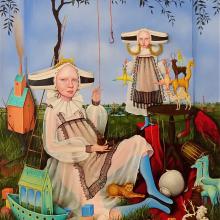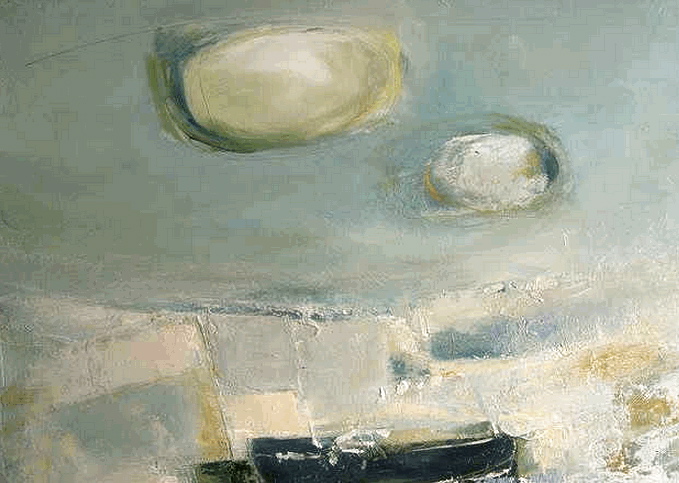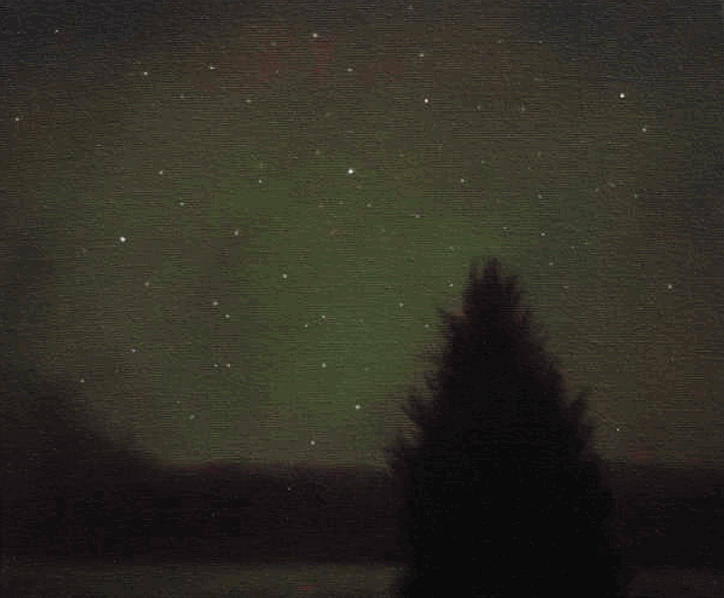
A week has passed since Spurtle first reviewed the joint Christmas Exhibition at Broughton Street’s Union Gallery.
Then we focused on the discordant crash of Samantha Boyes’s ‘High Tea’. Now we turn to some of the quieter works on offer – those I found most interesting or liked best among the works which have not been seen in the gallery before.
First to catch the eye were two queasy and peculiar paintings by the Scottish artist Heather Nevay.
Of ‘Flesch and Blood’ (right), she has written that it concerns a child’s imagination, ‘tears rendered into flesh-hued clouds ... wooden animals led by the butcher’s boy to an uncertain fate’. Perhaps most tellingly, she observes that ‘power and control hold a heady allure in the world of childhood games and roleplay’.
This disturbing dreamscape combines surreal attention to detail, and a knowing departure from fact. The curious animals are like the unreal, medieval imaginings of Hieronymus Bosch. (The reference to ‘Flesch’ suggests some historical Flemish influence, but is – I suspect – a playful red herring.) The faces resemble Julian Asange’s in a distorting mirror.
Nevay’s work is full of suspense – those dangling hooks, those hanging birds – and almost unbearably repressed energy. Her animals may be wooden toys, her subjects may be contrived within their painted boxes. But there is still some pressing, ghastly, narrative tension waiting for release. These figures are suggestively naked beneath their clothes, their postures sometimes sexually immodest and inviting.
And in ‘Fresh Meat’ (below), at least, the gaze we are encouraged to return is definitely not innocent. The hints of cannibalism, advertisement, abuse of power, procurement and unwholesome eroticism make one’s flesh creep.
It is not easy viewing, by any means, but it's certainly compelling.
It comes as a relief to consider next the ethereal calm of Jackie Gardiner’s ‘Sanctuary’ (below). This semi-abstract piece is similar in technique to 'Odyssey', twice mentioned here before and one of my favorite paintings exhibited in Union over recent years.
‘Sanctuary’ is, I think, an aerial view of two – possibly holy – isles lying just off a coastline. There are the subtlest hints of hill and beach, shallow sea, rocky beach, fieldlines, enclosures and perhaps ruined habitations. They are obscured and softened by an intervening gauze of cloud.

I love this work for its tranquility, its meditative interest in past and present, temporal and spiritual, cultivation and reserve. I love the pearly softness of its palette and the variety of its strokes and textures. I appreciate Gardiner’s quiet self-confidence – her willingness not to be explicit, to let the viewer think. I could sit and look at it for hours.

Joyce Gunn Cairns's robin in ‘His Territory’ appealed for the way she brought her characteristic complexity to such a cocksure bird. He views the viewer with a look of sorrowful reproach. His sagging trim, and the scratched history across the surface of the card, suggest an ageing boxer backed at last into his own corner.
And I enjoyed, too, Czech conceptual artist Marcela Trsova’s mobile 'Trinity' of three angelic bird-fish (below). The work is delicate and witty, and has fascinating abalone-shell eyes. It is a fitting successor to her ‘Sea of Soles’, and counterpoint to the Death-laden 'Messengers' reviewed here in February. AM
Christmas Exhibition – including also works by Olivia Irvine, Kevin Lowe, Sophie McKay Knight, Janet Melrose and Jenny Matthews, among others – will continue at the Union Gallery until 20 January 2014.